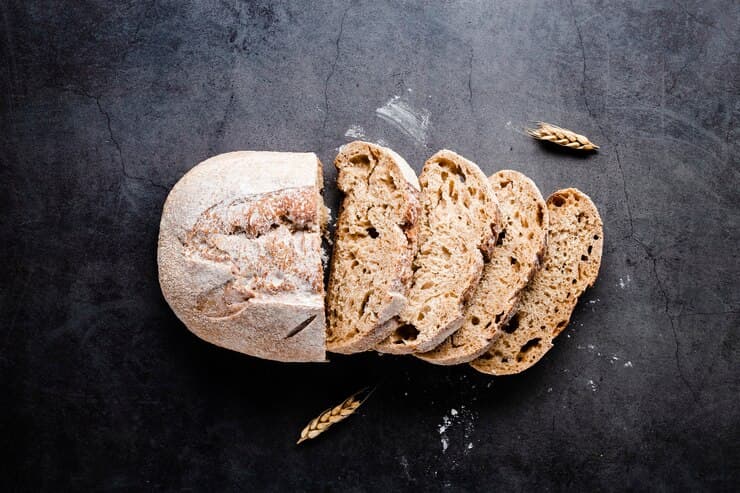Mennonite Bread Recipe: Traditional Comfort in Every Slice
Venturing into the world of culinary wisdom, I received an invaluable gift from my mother-in-law—a dog-eared copy of the original More With Less cookbook by the Mennonites.
Although not part of this community herself, she resides in rural Pennsylvania, where Mennonites are prevalent. Intrigued by their ethos, I explored this remarkable collection of recipes and advice advocating responsible consumption amidst a world of limited food resources.
Understanding the More With Less Cookbook
Introduced to the More With Less cookbook, I was struck by its Mennonite origins and its poignant focus on combating global food shortages. It offered an alternative perspective, urging mindful consumption and resourcefulness—an unexpected departure from the typical Christian narrative I was familiar with.
Insights into Mennonite Culinary Traditions
Perusing through cookbooks like More With Less, Laurel’s Kitchen, and Moosewood publications, I stumbled upon treasures of culinary wisdom. However, while these resources provided valuable insights into food, they also occasionally presented quirky recipes that yielded mixed results.
Reviving the Essence of Home Economics
Disregarded by many, the term “home economics” embodies the economic management of household resources. Beyond mere cookie-making or sewing hems, it encompasses supply-and-demand principles, cost-benefit analysis, and prudent investments—a crucial aspect often overlooked in nourishing our families.
Explore enhancements in Tangerine Olive Oil Cake variations
Recipe: Oatmeal Bread – A Mennonite Homely Delight
Derived from the More With Less cookbook, this oatmeal bread recipe has undergone adaptations to align with personal preferences. It boasts reduced sugar content and an increase in whole wheat flour, making it a hearty, cost-effective, and delightful alternative to conventional sandwich bread.
Let’s delve further into the world of Mennonite-inspired cooking and unearth the essence of their culinary traditions with this nourishing oatmeal bread recipe.
Ingredients:
- 1 cup quick or rolled oats;
- 1/2 cup whole wheat flour;
- 3 tablespoons brown sugar, turbinado, or honey;
- 1 tablespoon salt;
- 2 tablespoons vegetable oil;
- 2 cups boiling water;
- 1 package (about 2 1/4 teaspoons) active dry yeast;
- 1/2 cup warm water;
- 5 cups flour (combination of whole wheat and unbleached all-purpose).
Instructions:
- Combine oats, whole wheat flour, sugar, salt, and vegetable oil in a large bowl or stand mixer bowl;
- Pour boiling water over the mixture, stir, and let it cool to lukewarm;
- Dissolve yeast in warm water and add it to the oatmeal batter once cooled;
- Stir in 5 cups of flour (whole wheat and all-purpose), then knead the dough for about 8 minutes until somewhat stiff;
- Place the dough in a lightly oiled bowl, cover, and let it rise until doubled (approximately 45 minutes to 1 1/2 hours);
- Divide the risen dough into equal halves, shape into loaves, place in greased loaf pans, and let rise for another hour;
- Preheat the oven to 350ºF, then bake the loaves for about 40 minutes on the lower-middle rack;
- Once baked, remove the loaves from pans and allow them to cool completely on a rack before slicing;
- Indulge in the comfort and simplicity of this nourishing oatmeal bread, a testament to the enduring traditions of Mennonite cooking.
Mennonite Bread Recipe Alternatives
When exploring Mennonite bread recipes, consider these alternative approaches that retain the essence of frugal and resourceful cooking while introducing unique twists:
- Whole Grain Variation: Experiment with different types of whole grains such as spelled, rye, or barley in place of traditional wheat flour for added depth and nutrition;
- Seeded Enrichment: Enhance the bread’s texture and flavor by incorporating various seeds like flax seeds, chia seeds, or sunflower seeds for an extra nutritional boost;
- Natural Sweeteners: Swap refined sugars with natural sweeteners like honey, maple syrup, or molasses to infuse a subtle sweetness and depth of flavor into the bread;
- Herbal Infusions: Infuse the dough with herbs like rosemary, thyme, or basil for a savory twist that complements the bread’s simplicity.
Conclusion
The timeless appeal of Mennonite bread recipes lies not only in their simplicity but also in their adaptability. They offer a canvas for culinary exploration, encouraging us to honor tradition while exploring new dimensions of flavor and nutrition. As we savor each slice, we embrace the heritage embedded in these recipes and find inspiration to innovate, creating culinary delights that bridge the past and the present.
